Search Results for 'Briens Bridge'
26 results found.
‘You wouldn’t happen to be William Joyce, would you?’
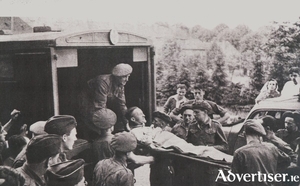
William Joyce was born in Herkimer Street, Brooklyn, New York in 1906 to Gertrude (who was originally from Lancashire) and Michael Joyce, a native of Killour, Co Mayo. Michael had taken American citizenship, which automatically made his family citizens. In 1909, the family returned to Ireland, initially to Mayo, then to Galway.
St. Mary’s College — the early days
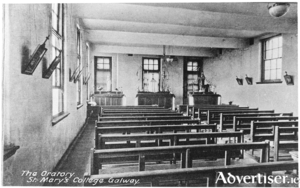
It was about this time of year, May 26, 1910 that the foundation stone of St. Mary’s College was laid. It was not, however the first St Mary’s College. Father John Paul O’Toole, born in Galway in 1804, was one of the last priests ordained during the wardenship. He was based in Paris and Rome but was always conscious of his own difficulty in obtaining a food secondary education in Galway, so he decided to return to Galway in 1843 and open a school here. His main difficulty was finding a premises but happily, he managed to secure “West House”, a detached residence with extensive grounds situated on Helen Street. He bought it from John Lushington Reilly, a great benefactor of the town and neighbourhood, especially during the famine of 1822.
The Fishmarket

The village of Claddagh was a unique collection of thatched cottages arranged in a very random fashion, a place apart, occupied by a few thousand souls. They had their own customs, spoke mainly in Irish, intermarried, elected their own king and had a code of laws unique to the village. Virtually the entire male population was involved in fishing, but when they landed their catch, the women took over and they were the ones who went out and sold the product.
Time to honour a Republican and a woman, say Morrissey bridge name campaigners
Supporters of the Julia Morrissey Bridge campaign gathered at Galway’s new bridge to promote the proposal to name the bridge after Galway’s forgotten 1916 woman leader.
Wolfe Tone Bridge
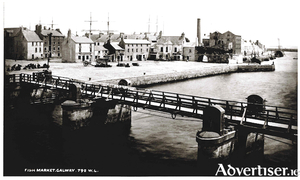
Wolfe Tone Bridge was the third bridge to be built over the river. The West Bridge (now known as O’Brien’s Bridge) was the first and dates from medieval times. The Salmon Weir Bridge dates from 1820, and the Wolfe Tone Bridge was built in the mid-19th century.
O’Brien’s Bridge

The Parliamentary Gazetteer of Ireland was published in 1845 and stated that, “The old, or west bridge, over the main current of the Galway River, was built in 1342; and till the erection of the new bridge [the Salmon Weir Bridge, built 1819] was the only passage from the eastern districts of the county to the great peninsulated district of Iar-Connaught. In 1558, a gate and tower were erected at its west end; and afterwards, another gate and tower were erected in its centre; but these were long ago entirely demolished. About 42 years ago, the bridge was thoroughly repaired on its north side, and was pronounced by architects to be strong; but it soon experienced the effects of the neglect which are so generally apparent in the town; and in consequence of dilapidated parapets, narrow carriage-way and the utter want of side-pavements and of lights, it was, a few years ago, a rather hazardous means of crossing a deep and impetuous river on a dark night.”
The extraordinary Fr Peter Daly walks on to the Galway Stage
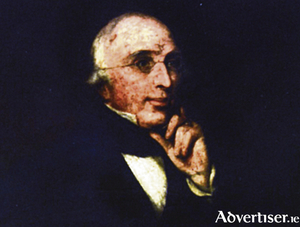
In the early decades of the 19th century fortunes were made in giving hundreds of thousands of emigrants safe passage to America. As the decades slipped by the numbers grew into millions. Liverpool had the main transatlantic business for these two islands, but Galway, situated some 300 miles closer to America, and with the onset of powerful steam-driven ships, believed that a better and quicker service could be provided.
Joseph Gaynor, a Galway busker
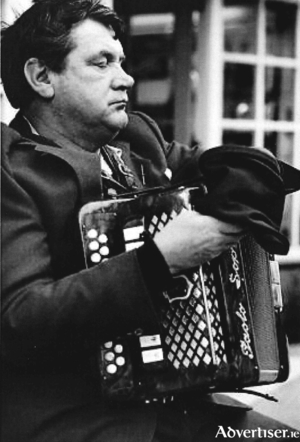
Busking is the practice of performing in public places, street performances for tips or gratuities, voluntary donations. It may come from the Spanish word buscar – to seek (fame and fortune), or the Latin word buscare – to procure, to gain.
Sample the uniqueness of the Latin Quarter
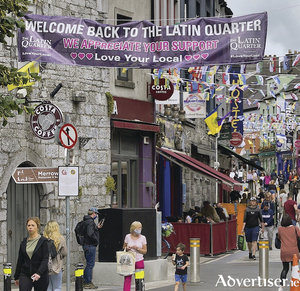
There's a uniqueness about Galway that is centred in the Latin Quarter, the cultural beating heart of a city that offers an experience all of its own.
Father Griffin’s body found
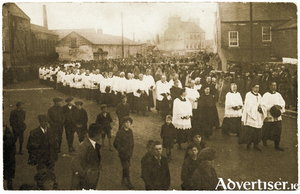
At about 3pm on the afternoon of Saturday, November 20, 1920, William Duffy of Cloghscoilte near Barna was driving cattle locally when one of them got stuck in the mud. William noticed part of a coat sticking out of the gap, so he went for his neighbours Patrick and Thomas Lydon, and later Patrick Cloherty and Patrick Concannon from Truskey joined them at what turned out to be a grave. They uncovered part of the body and realised that it was that of Fr Griffin. They decided to wait until it was dark so they covered up the body again, afraid that the Tans might return to remove it. William Duffy rode on horseback into Fr O’Meehan in Montpellier Terrace to inform him of the tragedy. Fr O’Meehan, Fr Sexton, and Canon Considine then hired Patsy Flaherty’s side car and went out to Clochscoilte.

